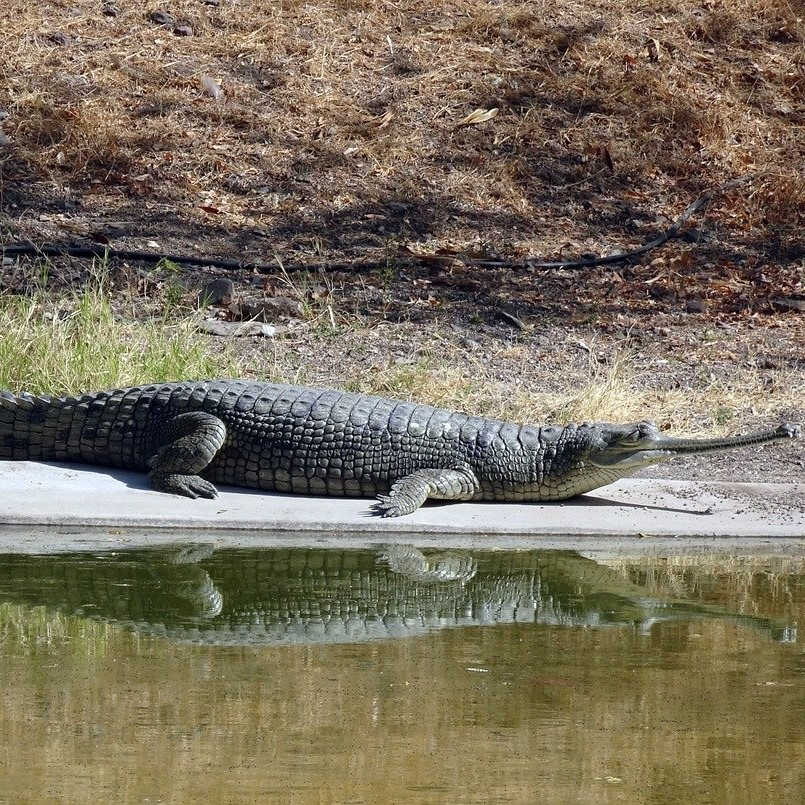The gharial is a crocodilian found in the rivers of India, Nepal, and Bangladesh. Also known as the fish-eating crocodile or gavial, it is one of the longest extant crocodilians with a typical length between 10-18 ft. The gharial is classified as critically endangered by the IUCN (International Union for Conservation of Nature) and hence is in a dire need of conservation.
Adult Gharials weigh between 150-250 kilograms. Males are larger than females. The snout is long and narrow with multiple sharp teeth. Compared with other crocodilians, Gharials are slow on land and spend most of their time in the water. It is only for sunbathing (basking), they come out of the water. Like other crocodilians, Gharials are cold-blooded and need the sun to raise their body temperature.

The Gharial is classified under the family Gavialidae and genus Gavialis. It is not a true crocodile. True crocodiles are species classified under the family Crocodylidae.
The species was probably named “Gharial” because of the protrusion on the male Gharial’s snout end. In the Hindi language, “Ghara” is a word for the Earthen pot. The protrusion looks like an Earthen pot, hence the name.
Historical range and current population
Gharials were once found from Northwest India to Central Myanmar. Now, the range is restricted to a few pockets in the Ganga and Brahmaputra river systems and the Mahanadi river. There is no accurate data on the Gharial population but the population is estimated to be less than 1000. Some optimistic sources predict the population to be between 1000-3000.
Best places to see
The gharial is one of the three crocodilians found in India (the other being the Mugger crocodile and the Saltwater crocodile). The best places to see Gharial in India are National Chambal Wildlife Sanctuary, Katarniaghat Wildlife Sanctuary, and Hastinapur Wildlife Sanctuary. In the National Chambal Wildlife Sanctuary, you will get a chance to see the Mugger crocodile and Gharial sharing the waters.

Bite force
The Gharial is not the strongest of crocodilians when it comes to bite force. The body of Gharial is designed to catch and eat fish. The bite force is between 1500-2000 Newtons.
Some basic facts
| Order | Crocodilia |
| Family | Gavialidae |
| Genus | Gavialis |
| Species | Gavialis gangeticus |
| Size | 150-250 kilograms/10-18 ft |
| Best place to see | National Chambal Wildlife Sanctuary |
| Countries | India, Nepal, and Bangladesh |
Read more